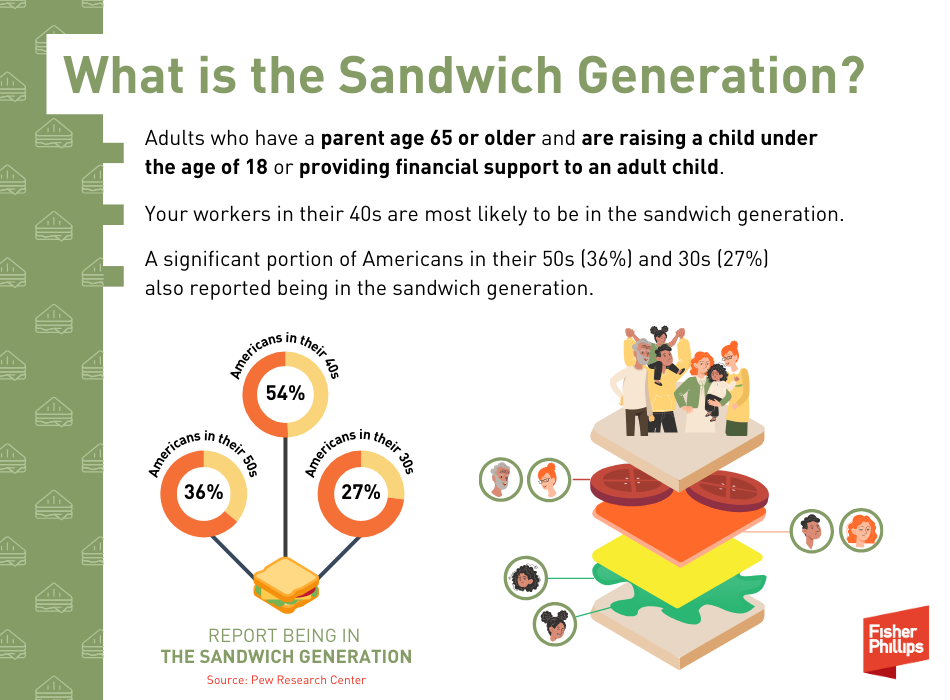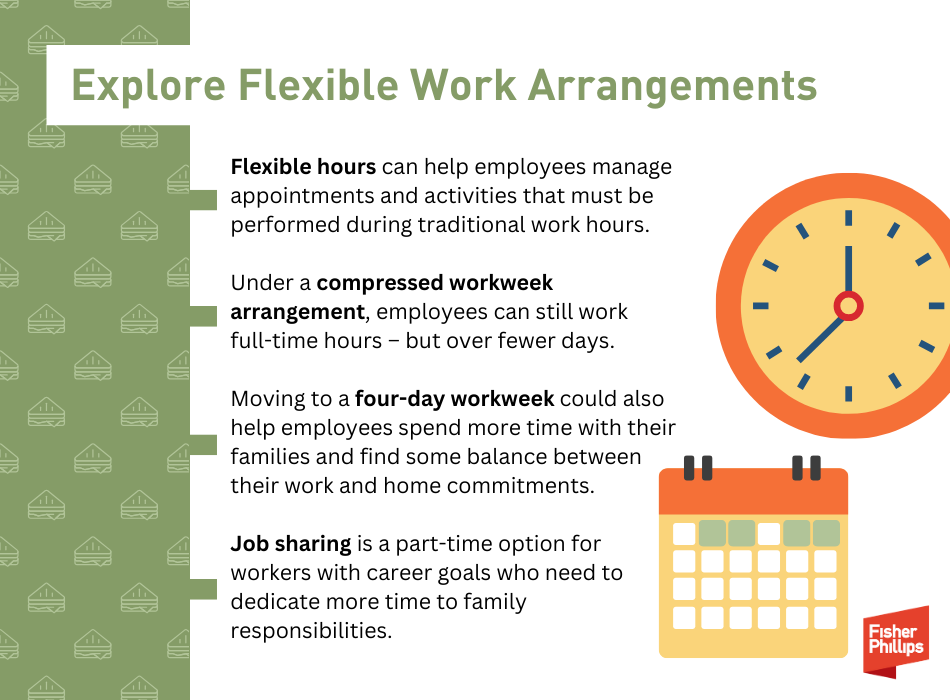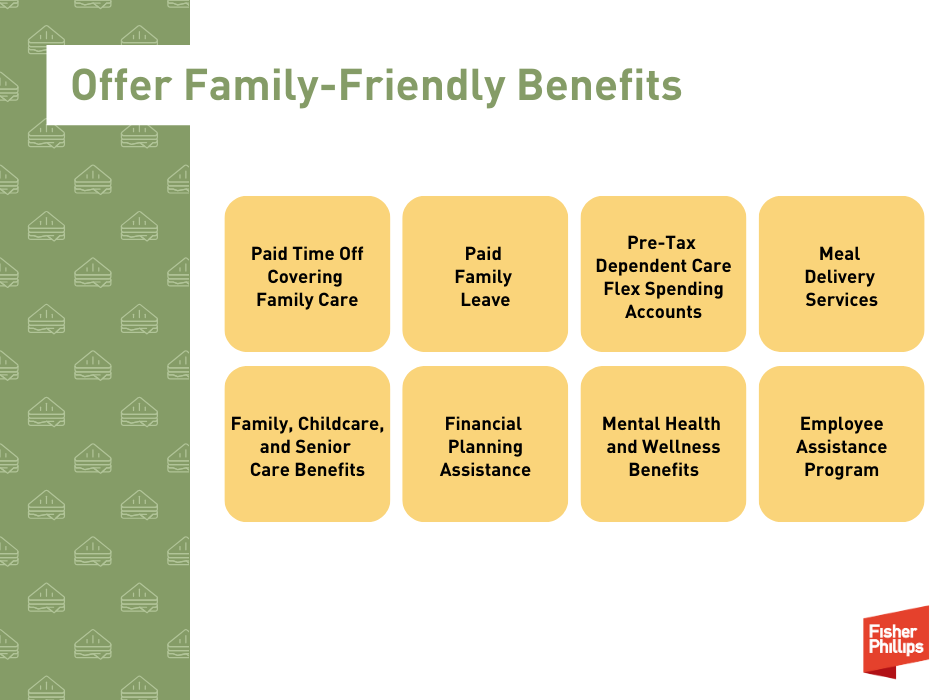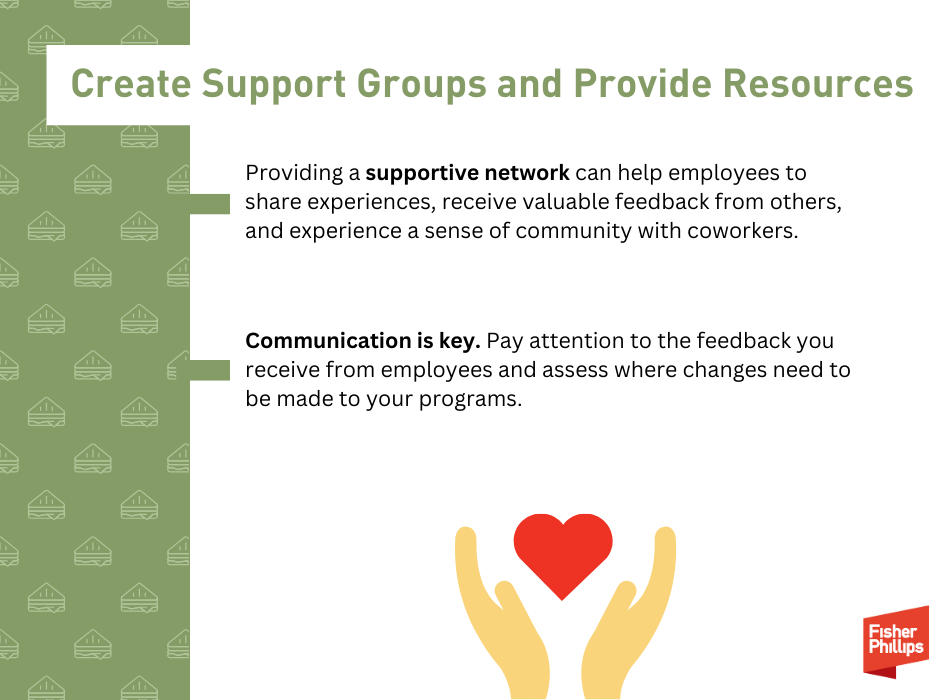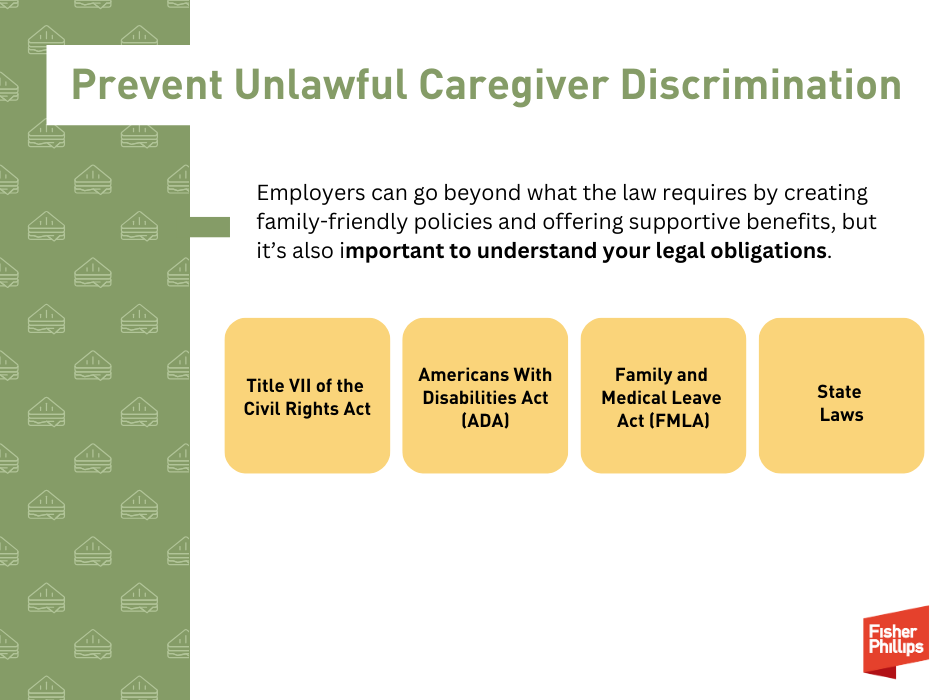5 Ways to Support Employees in the Sandwich Generation Managing Child and Elder Care
Insights
2.14.25
It’s hard enough to juggle a career and childcare responsibilities — but many employees with young children also have aging parents who need their help, too. Expenses, time constraints, emotional decision-making, and conflicting schedules top the list of issues for employees in the sandwich generation — adults who have both childcare and elder care responsibilities. What can you do to support these employees who are pulled in multiple directions? Here are our top five recommendations.
1. Be Understanding
Sometimes understanding what your employees are going through can go a long way in creating a supportive environment. Even if you are unaware of your employees’ specific circumstances, it may help to review the numbers and put things in perspective:
- A quarter of Americans reported being in the sandwich generation in 2021, according to Pew Research Center – and that number is expected to rise as more Baby Boomers retire and an estimated 73 million Americans will be age 65 or older by 2030.
- The study defined the “sandwich generation” as adults who have a parent age 65 or older and are raising a child under the age of 18 or providing financial support to an adult child.
- Your workers in their 40s are most likely to be in the sandwich generation (54%, according to the Pew survey).
- A significant portion of Americans in their 50s (36%) and 30s (27%) also reported being in the sandwich generation.
How does this impact your workplace? An employee with multiple caregiving responsibilities may be managing numerous activities on a daily or weekly basis for their children and aging parents in addition to their work responsibilities and self-care needs. Here are a few examples:
- grocery shopping, meal planning, and cooking;
- driving to daycare, school, sports and social activities, and doctors’ visits;
- helping with homework, projects, cleaning, and other chores;
- creating routines, dispensing medications, making appointments, and coordinating schedules;
- ensuring grooming, hygiene, and other personal care needs are met; and
- paying bills and overseeing other financial matters.
These tasks can be difficult to manage when it’s for either children or parents, so managing both can have a huge impact on your employees’ time, mental health and well-being, financial stability, and career management.
All of this can lead to burnout and high turnover. But you can be supportive by recognizing the issue and establishing some best practices to help your employees in the sandwich generation thrive at work while balancing their caregiving responsibilities.
2. Explore Flexible Work Arrangements
Now that hybrid and remote work arrangements are commonplace, more employers are exploring how flexibility can lead to better work-life balance and higher retention and productivity. While not all organizations can offer remote work, you may also want to consider the following flexible arrangements:
- Flexible hours can help employees manage appointments and activities that must be performed during traditional work hours. For example, an employee with family responsibilities in the morning could work 10:00 a.m. to 7:00 p.m. – and an employee with afternoon responsibilities could work from 7:00 a.m. to 3:00 p.m.
- Under a compressed workweek arrangement, employees can still work full-time hours – but over fewer days. For example, they may work four 10-hour days instead of five 8-hour days. This can free up a full weekday for family care.
- Moving to a four-day workweek could also help employees spend more time with their families and find some balance between their work and home commitments. This model is different than a compressed workweek, however, because employers essentially cut a day of work and make the workweek 32 hours for the whole organization or unit without reducing workers’ pay. While this is not realistic for all organizations, it’s a growing trend that has garnered media attention in recent years.
- Job sharing is a part-time option for workers with career goals who need to dedicate more time to family responsibilities. In this arrangement, two workers generally share one full-time job for continuity and flexibility.
Keep in mind that federal, state, and local wage and hour laws may impact your policies. For example, in some states, employees must be paid overtime premiums for hours worked beyond eight in a day. But there may be exceptions. For example, a state’s law may allow employees to work four 10-hour days without overtime pay under a consistent and agreed upon alternative workweek schedule that meets certain criteria. Reach out to legal counsel to ensure your programs comply with all applicable wage and hour laws.
3. Offer Family-Friendly Benefits
In addition to allowing flexible work arrangements, you may want to review your benefits offerings and consider adding perks that support the sandwich generation, such as:
- paid time off that covers family care;
- paid family leave;
- pre-tax dependent care flexible spending accounts;
- meal delivery services;
- family stipends, childcare reimbursement, and senior care benefits;
- financial planning assistance;
- mental health and wellness benefits; and
- an employee assistance program with access to childcare and elder care resources like referrals, assessments, financial advice, special programs, and counseling.
4. Create Support Groups and Provide Resources
Providing a supportive network can help employees to share experiences, receive valuable feedback from others, and experience a sense of community with coworkers. Be sure that groups are inclusive and open to all employees. You may also want to have contact information available for employees to reach out to local services that can assist with childcare and elder care needs.
Communication is key. Pay attention to the feedback you receive from employees and assess where changes need to be made to your programs. If employees in your organization with caregiving responsibilities do not feel supported by certain policies or aspects of your workplace culture, can they be easily altered?
5. Prevent Unlawful Caregiver Discrimination
Employers can go beyond what the law requires by creating family-friendly policies and offering supportive benefits, but it’s also important to understand your legal obligations. While there is no specific federal caregiver discrimination law, you should be aware of the following laws that may come into play:
- Title VII of the Civil Rights Act. This law prohibits employment discrimination based on sex, which includes gender stereotyping. Avoid gender-based caregiving biases and ensure you are not discriminating, for example, against women who tend to shoulder more caregiver responsibilities. At the same time, recognize that men take on these responsibilities, too. Ensure your policies, programs, and employment decisions are equitable and are not based on discriminatory assumptions.
- Americans with Disabilities Act (ADA). Under the ADA, employers may not discriminate against workers for having a relationship with a person with a disability. For example, it would be unlawful to refuse to hire or promote an employee based on assumptions about their availability or job performance because they are caring for a parent with dementia. The ADA does not, however, require you to provide an accommodation allowing an employee more time off to care for someone with a disability. The ADA only requires that employers treat employees the same, whether or not they have an association with a person who has a disability.
- Family and Medical Leave Act (FMLA). An employee may be eligible for up to 12 weeks of unpaid FMLA leave, which can be used to care for a spouse, child, or parent with a serious health condition.
- State Laws. Many states have more-generous leave laws that may cover smaller businesses, provide more leave or leave for more reasons, offer paid leave, and more. Many states also have their own workplace anti-discrimination laws and protection for people with disabilities, which can vary. Additionally, some states and localities have specific laws prohibiting employers from discriminating against family caregivers or include “family status” in their anti-discrimination laws, but the relationships covered vary. Be sure to check the laws in the areas where you do business and reach out to your FP attorney to create a compliance plan.
Conclusion
If you are reevaluating or updating your approach to managing your workforce, contact your Fisher Phillips attorney or the authors of this Insight to brainstorm and carry out effective ways to do so. We will continue to monitor developments and provide updates on this and other workplace topics, so make sure you are subscribed to Fisher Phillips’ Insight System to gather the most up-to-date information.
Related People
-
- Ilanit Fischler
- Partner
-
- Jennifer S. Kiesewetter
- Partner
-
- Courtney Leyes
- Partner
